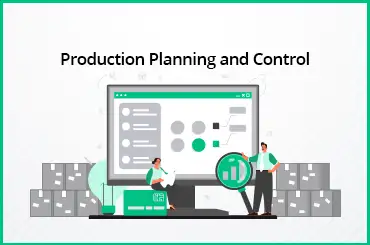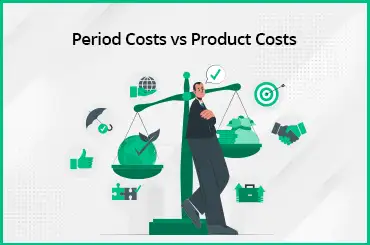Smart businesses leverage demand management strategies in order to anticipate, control, and plan for future client demand. It improves satisfaction rates since customers are getting what they want without having to wait for it. On the other hand, you might be thrown for a loop if you don't know the market demand for your goods, which can be stressful and even detrimental to your company's success.
In this article, you will learn the value and benefits of demand management and how to use it in your company, along with demand management components and processes, strategies, and best practices. Let's dive in and unlock the secrets to driving business success through effective demand management.
What Is Demand Management?
Demand management is a crucial aspect of business that revolves around understanding and fulfilling consumer needs. It entails identifying and meeting the desires of customers, while also ensuring efficient supply. Effective demand management involves anticipating demand fluctuations and proactively addressing potential bottlenecks in the supply chain to maintain smooth operations.
In the manufacturing process, demand management typically follows supply chain management, where procurement and supplier management are handled, and precedes portfolio management. This involves executing management plans through project implementation. This cross-functional approach ensures coordination across departments, making demand management a key driver of operational success.
Objectives of Demand Management
The primary objective of demand management is to enhance prediction accuracy and meet future product demand effectively. It focuses on strategic goals such as improving supply chain predictions, reducing overhead costs, ensuring customer satisfaction, and optimizing stock management.
Let's understand the objectives of demand management in detail:
Accurate forecasting
Demand management begins with analyzing customer buying patterns and trends to forecast future demand accurately. By leveraging both present and past data, businesses can create a precise picture of future sales. Automated software systems are often utilized to track inventory and provide real-time access to information, aiding in accurate forecasting.
Optimal stock management and expenditures
Another objective of demand management is to optimize cost and inventory management. Accurate forecasts help in reducing investment in excess inventory by making informed decisions. By limiting safety stock levels and avoiding overspending on surplus stock, reliable forecasting maximizes cash flow and reduces wasteful expenses.
Increased customer satisfaction
Demand management improves customer satisfaction by enabling more accurate predictions and ensuring proper stock levels. By having the right items in stock, businesses minimize stockouts and backorders, leading to faster order fulfillment and enhanced customer experience. Improved service efficiency and delivery speed contribute to customer loyalty and repeat business.
Read Also - Economic Order Quantity (EOQ) Explained
Better inventory management and stockpiling
Adopting demand management practices enables efficient stock planning and storage based on locational demand. It optimizes the supply and demand control cycle, reducing inventory waste and maximizing profitability. By using accurate inventory data, businesses can place orders for the right quantity of products at the appropriate time, ensuring uninterrupted supply and meeting customer demands.
By implementing effective demand management strategies, businesses can achieve accurate forecasting, optimize inventory management, enhance customer satisfaction, and improve overall operational efficiency. Join us as we explore the key principles and best practices of demand management to drive business success.
Demand Management vs Demand Planning
Demand management and demand planning are two related but distinct concepts in the field of supply chain management.
Demand Planning
Planning for future product or service demand is known as "demand planning," and it often involves looking forward at least a year. Demand planning involves the process of forecasting and estimating future customer demand for products or services. It relies on historical data, market trends, and other factors to predict demand patterns.
Although demand planning is commonly linked with the sales department, it is really very intertwined with the supply planning department. A company's demand-planning strategy, at its best, ensures supply levels that are either equal to or slightly higher than demand.
Demand Management
In the same way that demand planning helps maintain a balance between supply and demand, demand management does the same for consumers in the near term. Demand management focuses on actively influencing and managing demand to align with organizational goals and available resources. It involves strategies and activities aimed at shaping and controlling customer demand.
One way to keep a company from going into a downward financial spiral is through demand management or careful monitoring of current consumer demand. In reaction to local events, demand management is far more prepared to capitalize on commercial prospects.
Read Also - Best Warehouse Management Software 2023
Demand Management vs Capacity Management
Capacity planning and demand planning are related processes in project management that help businesses anticipate and prepare for future supply and demand. They can help you determine if your business has what it needs to carry out its proposed projects.
Demand management involves understanding, forecasting, and shaping customer demand to align it with the organization's capacity. It includes strategies and activities aimed at influencing customer behavior, such as marketing campaigns, pricing adjustments, and promotions, to stimulate or manage demand.
The goal of demand management is to ensure a match between customer demand and the organization's ability to meet that demand efficiently.
On the other hand, capacity management is concerned with evaluating and managing an organization's capacity to meet customer demand. It involves assessing the resources, capabilities, and constraints of the organization, including production facilities, equipment, labor, and other inputs.
Capacity management aims to optimize the utilization of available resources to meet customer demand effectively while avoiding underutilization or overutilization of capacity.
Effective coordination and alignment between demand management and capacity management are crucial for organizations to balance supply and demand effectively and achieve their operational goals.
Read Also - What Is Production Management System?
Demand Management Components and Processes
You want to meet the market where it is, thus your demand management approach should begin with gathering information about the market and the demand chain.
The following section will help you understand the detailed components of demand management and its processes.
Review past data
Look at sales statistics from the last several months or years to find what consumers have been most passionate about. Take a look at the successes; what did you buy that far above your expectations, and what were the circumstances like at the time? The next step is to analyze the low-performing elements and determine if they may be salvaged, reworked, or abandoned.
Examine the state of the market
Get up to speed on the latest happenings by studying the state of the market today. Analyze your competitive edge (or lack thereof) to see how you do versus alternatives in your market. Gather information on the market and your rivals, as well as global and industry trends, to help guide your next move.
Predict interest
Make predictions about future client demand using the information you gathered in the preceding phases. That's what we call demand forecasting, and that's how we know what to make and when to create it, and for whom. Your plans can then be founded on these estimations.
Strategize ways to meet consumer needs
Create a demand strategy and plan of action based on your forecasts and data. In this step, you'll figure out how to put your newfound information to use in your regular routine.
When clients are satisfied, businesses thrive. Find out how to increase the output of your revenue team and lower the waiting periods for customer requests, all while ensuring that consumers really use the products they buy.
Incorporate into business planning
The purpose of demand management is to aid in the preparation of projects and portfolios. As such, it may be used as a prioritization tool to help direct your next efforts. Demand management is the starting point from which you'll develop programs and aim for outcomes that will have an immediate effect on consumers.
Coordinate with supply planning
The first step in meeting customer demand is figuring out how to meet that demand. To find out if you can get the goods you need to satisfy the expected demand, consult with your procurement group. If you plan ahead, you'll be able to anticipate any obstacles or bottlenecks in your supply chain and work to eliminate them.
Optimize your process
Repeat the demand management lifecycle once it is finished. This time around, it's all about optimization; specifically, how can you hone in on creating the best possible demand management approach for your company? Your demand management strategy shouldn't remain unchanged as your company evolves.
Read Also - Best Purchase Order Software
Demand Management Examples
Organizations may improve their supply chain's efficiency and responsiveness to consumer requests by employing the best-suited demand management approach.
The following are some real-world applications of demand management:
Retail
Retailers cannot afford to fall behind on customer demands for seasonal items, new launches, and emerging trends. Demand management is used by retailers for demand forecasting, stock planning, and price optimization. Retailers can boost profits, save costs, and please customers through demand management.
Manufacturing
Producing goods with little surplus inventory and optimum availability of raw resources is the goal of demand management. It improves the effectiveness and efficiency of production. Manufacturers can minimize waiting times, maximize inventory efficiency, and boost customer happiness through demand management.
Services
Services like transportation, lodging, and food preparation all rely heavily on managing customer demand. Companies use demand management to do things like optimize prices based on predictions of future demand. Revenue, waste, and customer happiness may all be increased, as well as the quality of service provided, by implementing a demand management strategy.
Healthcare
For the healthcare business to have sufficient supply, staff, and facilities to fulfill patient demand, demand management is crucial. Forecasting patient demand, allocating employees, and optimizing stock levels are all possible with the help of demand management in the healthcare industry.
Read Also - E-Way Bill: E-Way Bill Rules and Generation Process
Demand Management Strategy
Although demand management has multiple well-defined goals, achieving them is not always simple. To get where you need to go faster (and more efficiently), it's crucial to put in place effective demand management methods and operational procedures.
Data collection and appropriate modeling
Good operations software is crucial for keeping track of your customers, products, and orders. All of your brand's data and analytics can be found in one place thanks to a modern system such as enterprise resource planning software.
With all this information at your disposal, you may construct a demand model of consumer behavior, which can greatly aid in the generation of forecast forecasts. In a nutshell, a demand model analyzes historical data to anticipate consumer behavior. How? By analyzing how customers' willingness to buy a product changes in response to different pricing structures.
Predictive analytics for estimating future demand
In terms of forecasting, once you have gathered and aggregated your data, and invested the work in constructing a data model, you can utilize the past to guide your present and future actions. Most reliable predictions use data analytics to forecast the future demand for your products.
To foretell how a product will do in the future, predictive inventory analytics uses a variety of statistical and modeling tools. These tools have a fundamental effect on future projections and will help you make long-term, profitable choices in your supply chain.
Ensure efficient stock planning using anticipated demand
Using your forecasting data, you may plan your inventory for the upcoming weeks, months, or years. This phase of demand management is also known as inventory planning and entails determining what and how much stock needs to be reordered.
Moreover, while preparing your inventory, you must consider where you will obtain your raw materials and what sort of production schedule you will adhere to. These specifics guarantee that your stock is sufficient to fulfill consumer demand without overstocking. Planning incoming and outgoing stock has consequential effects on profits.
Supply chain planning and implementation
Manufacturing and distribution supply chain plans may be drafted and implemented when inventory planning is finalized. The purpose of supply chain planning is to pinpoint issues, such as fulfillment bottlenecks, and production delays, that are impacting your supply chain operations.
Addressing these concerns head-on can help you optimize your inventory expenses in a way that keeps up with client demands.
By prioritizing supply chain forecasting, you'll be able to make better judgments about inventory restocking and reduce lead times. Simply said, shorter manufacturing timelines result from fewer mistakes, and less back-and-forth during communication with your suppliers and manufacturers.
Read Also - What Is Bill of Materials?
Demand Management Best Practices
If you want to succeed, you need to ensure that your new demand planning methods are efficient and extensible. For a head start, consider the following six recommendations:
Explore modern technology
Demand planning is all about empowering your team with the resources they need to make growth-driving decisions based on real facts. Unfortunately, a person can only achieve so much with simple software or a few spreadsheets.
The best approach to get a competitive edge is to implement a cutting-edge demand planning solution that is specifically designed for your company. Modern technology programs provide live data visualizations, interactive simulations, ongoing models, and automated recommendations. However, before you become lost in the jungle, it's advisable to speak with a vendor that has experience serving businesses like yours.
Obtain accurate information
Developing a demand strategy with false or missing data is a surefire way to fail. Verify your calculations are correct before moving further, and set up a system for gathering information that is both efficient and trustworthy.
Involve all stakeholders
It's important to foster constant two-way communication and teamwork between all involved parties. There should be participation from or at least consultation with demand planners, suppliers, sales and marketing, operations, finance, and any other departments that affect or meet demand.
Define functions explicitly
The supply chain is already a complex system. Make sure everyone involved has full visibility and a firm grasp on their tasks and top priorities to avoid anybody getting lost in the shuffle.
The success of demand planning depends on the maximum participation of the right stakeholders, through comprehension of their roles and the value they add to the process.
Keep an eye out for unpredictable scenarios
An efficient demand plan goes beyond simple forecasting to meet actual demands. It's a great tool for drawing attention to potential threats and development avenues. For instance, if you anticipate a surge in demand for a certain product, you may adjust your workforce or bring on new employees accordingly.
Maintain an ongoing pattern of supply and demand
Your business should be able to make informed procurement decisions on a continuous basis, with the help of demand forecasts. In reality, the fundamental advantage of a well-developed demand planning tool is the ability to issue smart purchase orders and monitor sales insights.
Read Also - Delivery Challan: Meaning, Uses and Format
Benefits of Demand Management
Here are some key advantages of demand management across various industries:
Minimizes Excess Storage Costs
If a corporation doesn't conduct demand planning or does it inefficiently, it may end up with too much stock on hand. Money is squandered when this happens because it takes money to store things, and it costs much more money to store things in excess. Utility bills, repairs, and upkeep on storage facility equipment are all part of the overall storage budget.
With effective demand management, companies may better serve their customers' needs by anticipating their wants and needs and then purchasing and stocking just enough goods to suit those wants and needs.
Benefits Customer Service
Customers need confidence that the things they want to buy will always be available from a business before they continue doing business with that company. Customers will go elsewhere to make purchases if an item is out of stock or will take too long to ship.
In order to meet the needs of their consumers, businesses use demand planning to guarantee they always have enough inventory on hand.
Improves Production Effectiveness
Every stage of the manufacturing process is subject to strict deadlines. Without knowing how much goods would be needed, a corporation will have to make last-minute changes to its manufacturing schedule. This can cause delays and chaos in production if not addressed.
Demand management can ensure such scenarios do not occur. Demand management practices help to run production schedules on time by providing accurate demand forecasts and plans to meet the same.
Read Also - ABC Analysis in Inventory Management: Benefits, and Implementation Strategies
Facilitates Logistical Preparation
A corporation may save money on transportation by just sending out the number of trucks necessary to meet demand. There may be major holdups if clients ordered 1,000 items but the company's delivery vans could only carry 900. If, on the other hand, they send 1,000 items but only require 900, they may have wasted a significant amount of money on shipping and other hidden costs.
Enhances the Administration of Human Resources
If a business is able to accurately estimate future demand, it will have a better idea of how many people to hire across its whole supply chain. Lack of available labor can cause orders to be delayed, lowering customer satisfaction even if the company has all the essential resources, items, and skills. The high cost of labor is directly proportional to the number of employees.
Challenges of Demand Management
Organizations may face certain challenges in effectively implementing and supervising demand management. Here are some common challenges associated with demand management:
Uncertainty in supply and demand
Demand management can be hampered by problems in the supply chain, some of which are beyond your control. In the event that you encounter problems with the supply chain, a well-thought-out change management strategy will allow you to rapidly make adjustments and, hopefully, avoid any unwanted consequences.
In the end, forecasting is still an estimate:
Forecasting, no matter how well-informed, is still an estimating process and hence has some element of uncertainty. It's possible that you'll have to deal with unexpected expenses or complications if things don't go as planned. You may reduce the likelihood of negative outcomes by including relevant data in your forecasting process and considering alternative scenarios.
Scattered groups:
Without the right resources and cross-departmental communication mechanisms, you'll waste a lot of time going from group to group to get the data you need. Keeping in touch with stakeholders throughout the demand management process is much easier when using solutions designed for cooperation, such as project management software.
Complex implementation:
For demand management implementation to be successful, you'll need the support of upper management and team members. Project plans are a great way to explain the functionality and significance of your demand management system to your stakeholders and win their support. This will help you convince upper management to put resources into your project before you even begin.
Get the Best Demand Management Software for Your Business
Planning, tracking, and skillfully dealing with consumer demand are all aspects of demand management. Although it may seem daunting at first, demand management is an integral aspect of efficient supply chain management that ensures a company's operations function smoothly and productively. By understanding the functions, processes, and examples of demand management, businesses can proactively address customer demands, optimize their inventory levels, and enhance overall operational efficiency.
TranZact software offers a comprehensive solution to support businesses in their demand management endeavors. With its advanced features and capabilities, TranZact empowers organizations to streamline their demand forecasting, by automating inventory planning, and order management processes. By leveraging real-time data and intelligent insights provided by TranZact, businesses can make informed decisions and respond swiftly to market changes!
FAQs on Demand Management
1. What is demand management in logistics?
Demand management in logistics refers to the strategic process of forecasting, planning, and controlling customer demand for products or services to ensure optimal inventory levels and enhance overall logistics operations. It involves analyzing market trends, historical data, and customer behavior to accurately predict and meet demand in the complex realm of supply chain and transportation management.
2. What is the purpose of demand management?
The primary purpose of demand management is to foresee customers' needs and meet them without going over budget. It helps businesses understand and shape consumer demand for their goods and services, and align internal processes to ensure timely fulfillment of demand.
3. What are the steps of demand management?
Planning, communicating, influencing, and prioritizing projected demand are the four steps or phases that make up the demand management process. Across all these steps, critical information is gathered, analyzed, and evaluated. Lastly, it's important to assess the effectiveness of demand management efforts by measuring key performance indicators and making improvements as needed.
4. What are the key elements of demand management?
The key elements of demand management include demand forecasting, order fulfillment, inventory management, and sales and operations planning (S&OP). These elements collectively enable businesses to accurately predict demand, efficiently fulfill orders, optimize inventory levels, and align sales and operations activities to meet customer needs effectively.















